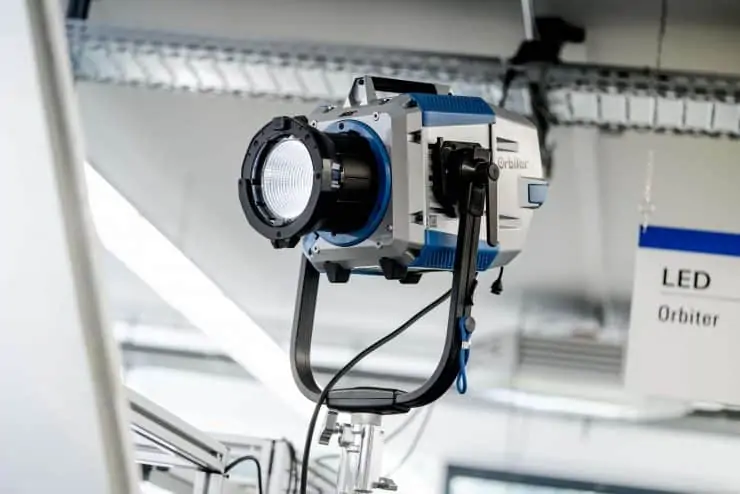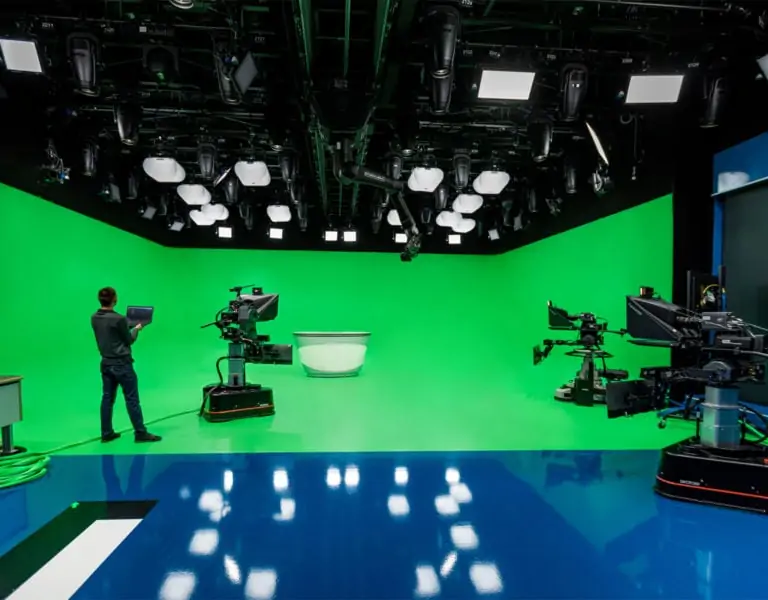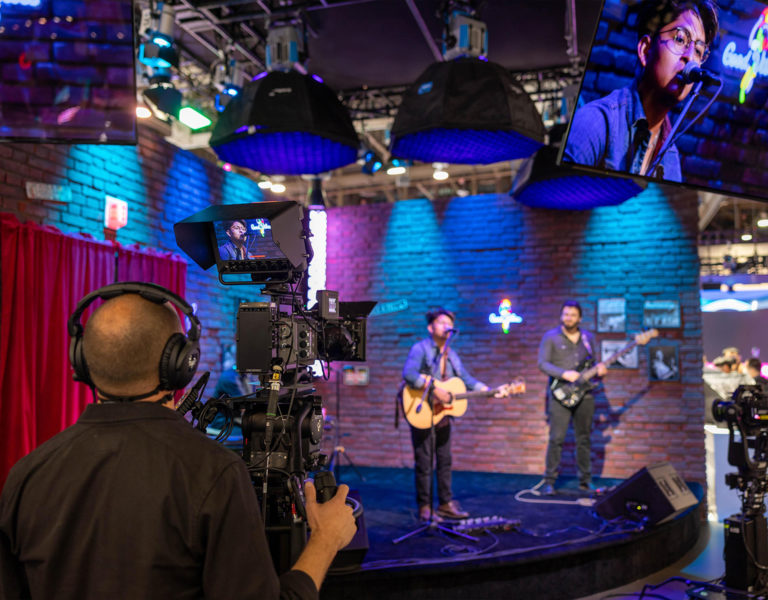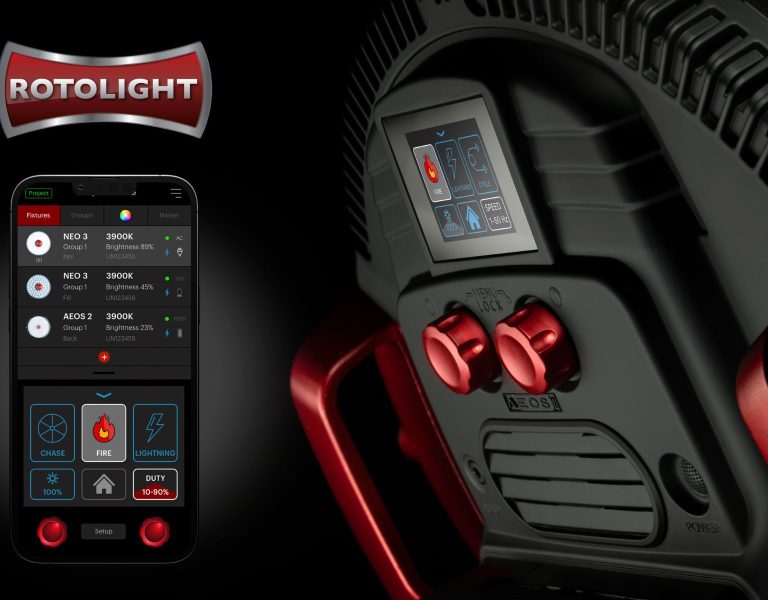A spellbinding new sci-fi series from the creators of HBO’s Westworld captures the dystopian future which lies at gamers’ fingertips. Cinematographer Stuart Howell Assoc. BSC takes us behind the scenes on his time-travelling adventure on The Peripheral and reveals how ARRI’s virtual production stage made some of the show’s trickiest shots possible.
Real and virtual worlds collide to spine-chilling effect in Amazon Studios’ new high-concept sci-fi series, The Peripheral. It’s 2032 in the Blue Ridge Mountains, where Flynne Fisher (Chloe Grace Moretz) lives with her professional VR gamer brother, Burton, and their sick mother. Flynne, also an avid gamer, is given the chance to beta-test her brother’s new game, transporting her to a troubled future London.
Helping to bring William Gibson’s slickly plotted novel to the screen was Stuart Howell Assoc. BSC, who shot four episodes of the first season for director Vincenzo Natali. Howell relished the opportunity to craft The Peripheral’s distinctive settings on both sides of the Atlantic through his lensing.
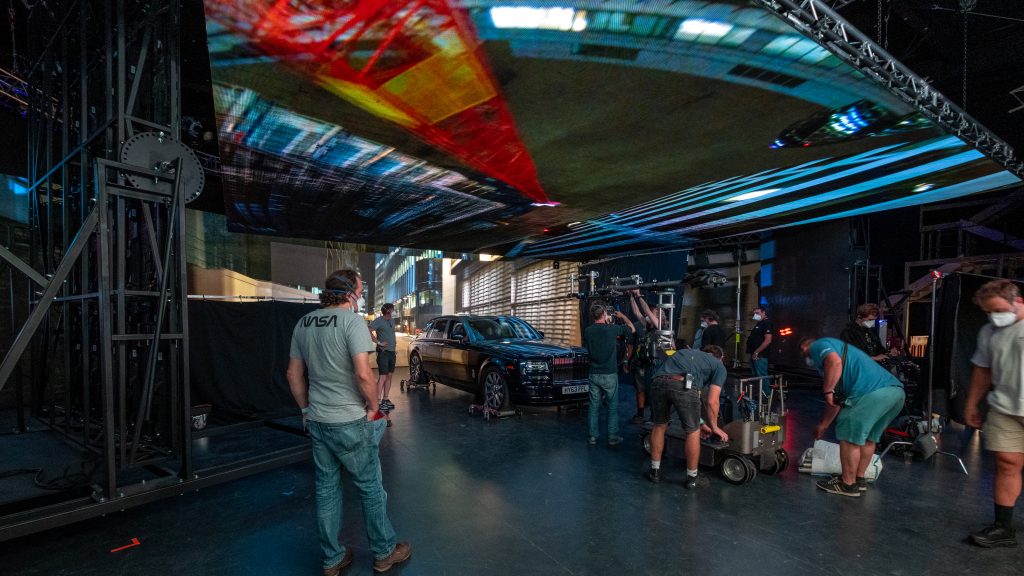
“It was about finding a contrast that works,” he explains. “(Vincenzo and I) felt the American parts of it should have a slightly nostalgic feel to them. We looked at a range of photographers and Stephen Shore resonated with everyone, with that Ektachrome, Polaroid feel to his colours. None of us wanted to create a desaturated show – it had to be quite vibrant, but a bit frayed around the edges.”
Principal photography commenced in May 2021, with Howell opting to shoot on the Sony Venice paired with Atlas Orion Anamorphics from ARRI Rental. Episode one, which swings between Flynne’s home in North Carolina and London, kicks off the series with some eye-popping set pieces, including Burton’s night-time motorbike ride through central London.
The challenges of the sequence included a night shoot on 2021’s August Bank Holiday involving some of the capital’s most famous landmarks, including Westminster Bridge, Trafalgar Square and Buckingham Palace. It was originally going to be shot in lockdown, allowing the team to take advantage of the rarely-empty London streets. But as the city had now reopened, Howell notes it would have been impossible schedule-wise – not to mention “astronomically expensive” – to film actor Jack Reynor on a low-loader around London’s streets for the close-ups, so a more time and cost-effective alternative was sought. The cinematographer remembered being shown around ARRI Stage London in its early stages and had a vision for shooting the close-ups of Reynor in the volume.
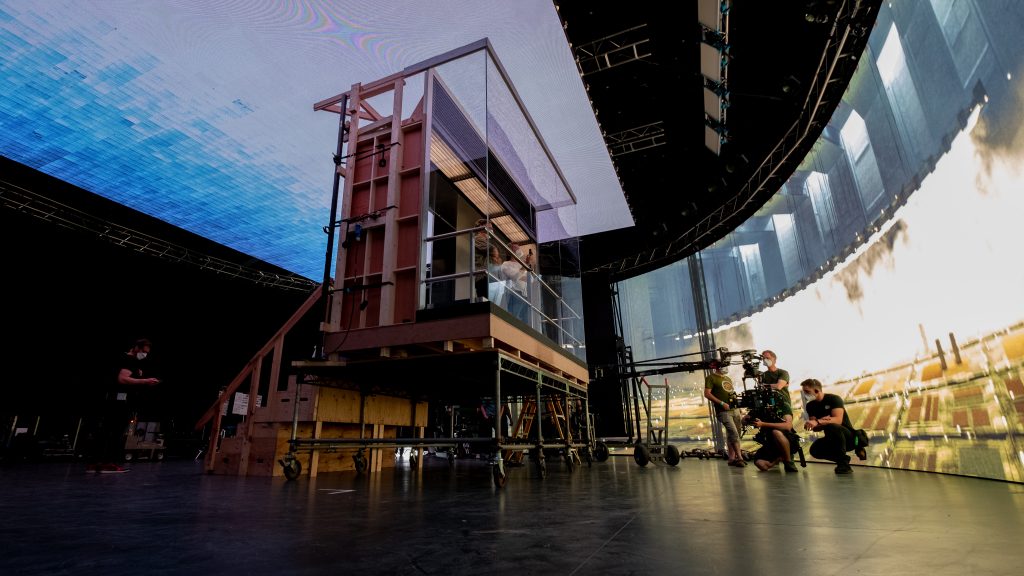
The state-of-the-art studio, located at ARRI’s UK premises in Uxbridge, West London, and managed in partnership with Creative Technology, is equipped with a wraparound ROE Visual LED volume that features a curved 30x5m primary wall. LED processing is powered by a Megapixel Helios system, and two playback systems utilise Creative Technology’s proprietary servers – nDisplay for real-time rendered 3D environments and Photon for uncompressed 2D environments. Everything is run through a Christie X80 processor. The volume’s technology stack is complemented by ARRI’s highly flexible and versatile stage design, so that productions have the tools they need to shape the most effective workflow for their needs.
The Peripheral was one of the first productions to benefit from ARRI Stage London’s virtual production capabilities. After visiting the stage with the producers, they went in for some tests “and everyone loved it,” says the DP. He remembers that Jonathan Nolan, one of the show’s producers, was especially keen for everything to feel as real as possible, so shooting on the stage felt like a useful way of bringing some of the show’s trickier shots to life without sacrificing authenticity.
Although Howell and his department were new to the pioneering technology, they had engaged in plenty of research and could make use of the expertise of the stage’s experienced technicians. “The biggest challenge with VP stages is all the decisions need to be made before you shoot it,” he says. “We had to choose locations, figure out how we were going to shoot these plates and work out angles. Also, it’s a photographic process at the end of the day, so things like lens choice, focal length, depth of field and T-stop have got to work across the whole plane – from what you’re shooting in the car to background plates. These are the kind of things we tested extensively.”
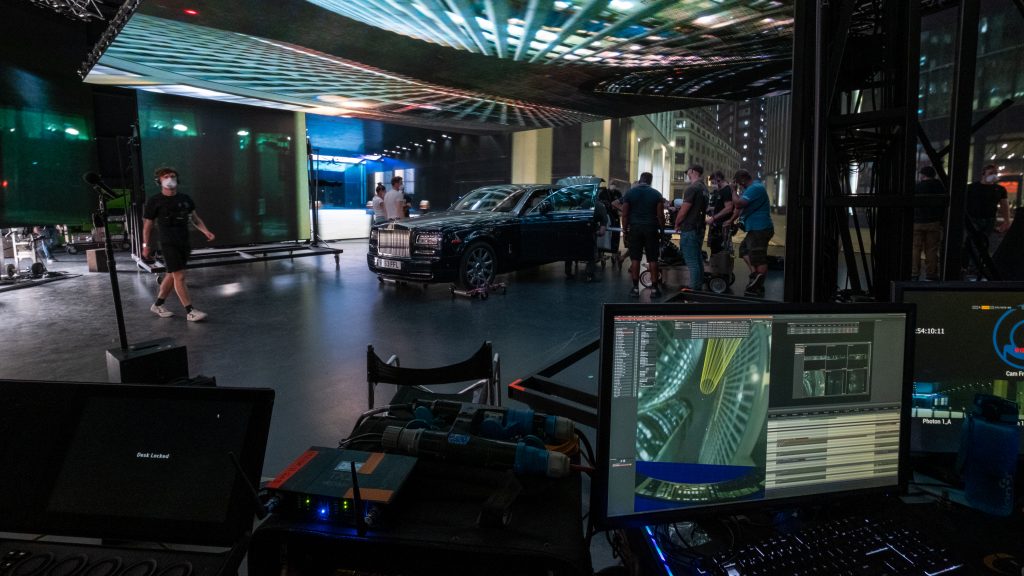
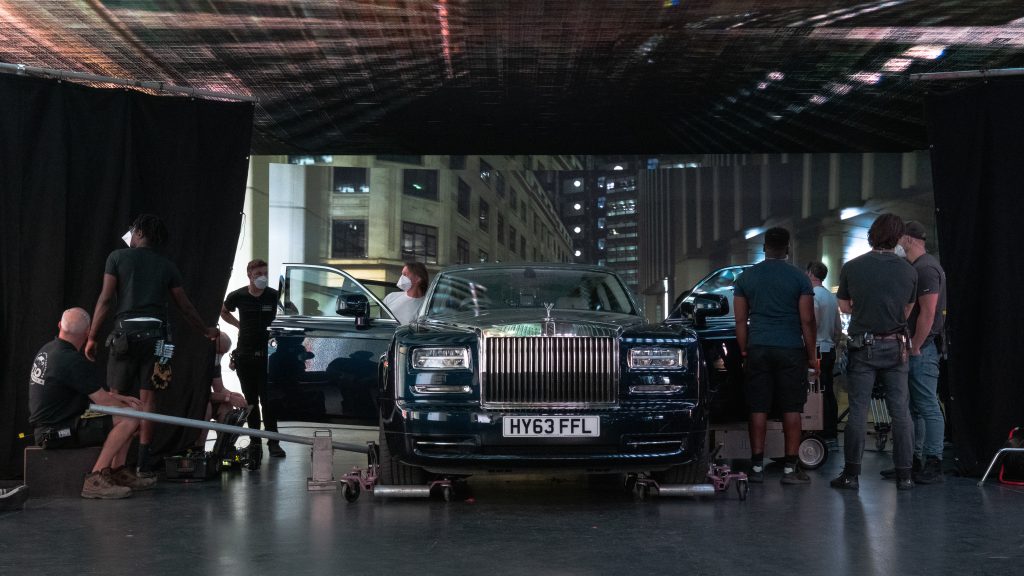
The adaptable set-up at ARRI Stage London and the ability of its panels to cast lighting effects, even when not in frame, helped make the shoot go smoothly. As the stage’s side panels are moveable and tiltable, they allow for ultimate customisation to suit each production. The DP recalls, “The beauty of the virtual reality stage is that you have the reflections there. (At ARRI Stage London) not only do you have the background screen, but you have the LED roof which uses projection as well. Then they have side panels which you can bring in on certain angles to light faces and increase and decrease the brightness. The front screen also creates ambient light, as if you really were driving through London.”
The motorbike ride wasn’t the only sequence that made sense for some virtual production treatment; a fight in a Rolls-Royce while driving around the capital was another perfect candidate for shooting in the volume. “Even with a stuntman driving, they’ve got to be 95% concentrating on the driving and 5% on the fight, so it wasn’t really what anyone wanted,” Howell adds. “I think we ended up in a good place where you wouldn’t know that the scene wasn’t shot in a moving Rolls-Royce.”
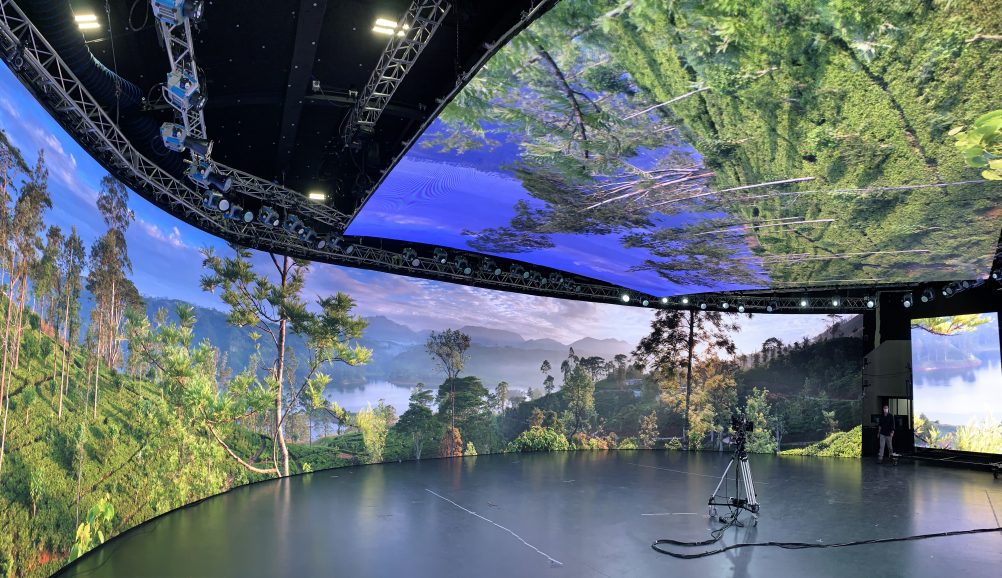
The third element was a glass lift zooming through the mysterious research institute. “We could have done that green screen, but they’re in a glass box,” the cinematographer says, “so from my point of view, what really makes all that work is the interactive reflections. And at one point, a whale swims past the elevator and we can actually see it, rather than have someone say, ‘Act like you’ve just seen something.’ The more we discussed (shooting in a volume) with those three elements, it became obvious that was the way to go. It was definitely worth doing.”
Howell remembers how much the cast enjoyed the experience of working in the volume too. “When the actors are doing green screen work normally, you’ve got a big screen behind you and you’re looking out at the crew and someone behind a camera,” he says. “But when Jack was on the motorbike, he had the projection behind him but he could also see where he was going. He knew that up there, he was going to turn left. It wasn’t just the director telling him to get ready to turn left – Jack could see where he was going as if he was driving down a real road, so he loved it. I think the virtual production adds to his perception of what he’s doing and makes his job easier.”
Embracing a new approach to cinematography with virtual production technology may have been a learning curve for the whole team, but Howell was delighted with the result. “With the motorcycle scene, there was a worry it was going to be too exposed,” he admits, “but I thought it all worked very well.”
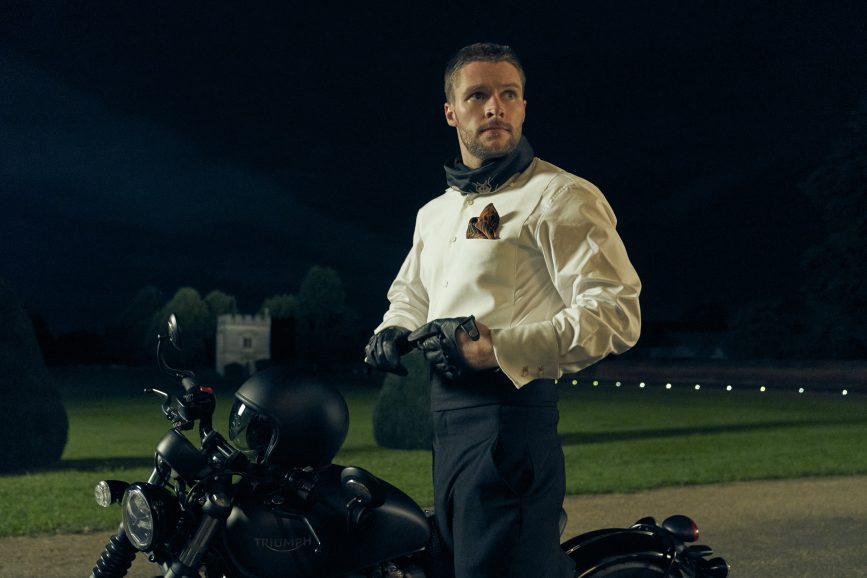
–
FACTFILE
ARRI Stage London is a state-of-the-art virtual production facility equipped with a wraparound LED volume, installed in partnership with Creative Technology.
The facility brings together 343 sq m of LED wall with creative software platforms, camera-tracking systems, and powerful media servers.
Complementing the stage is a suite of furnished production accommodation, while technical support can be tailored to each project, combining the expertise of ARRI and Creative Technology in the form of pre-production advice and creative production services.
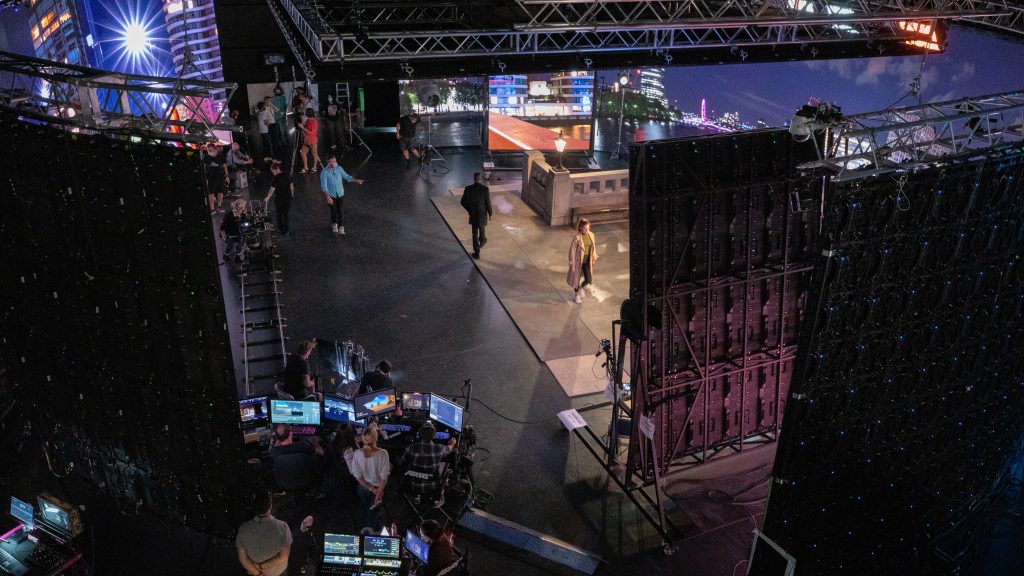
Key features
- ROE Visual LED volume, comprising main in-vision curve 30 m wide by 5 m high, two moveable side screens, and a back curve 18 m wide by 4.2 m high.
- 9.6 m by 9.6 m dynamic motorised ROE Visual LED ceiling, made up of four independent sections.
- Powerful media servers running Unreal Engine for real-time virtual 3D environments. 2D workflow also available.
- Both outside-in and inside-out camera tracking solutions.
- Technical support, preproduction, and creative production services.
- Dedicated 708 sq m blacked-out stage with sound-dampened ceiling and versatile, high-load rigging infrastructure.
- IP-based lighting control network with 50 integrated ARRI Orbiter LED fixtures on motorised lighting truss.
- Production office, serving kitchen with crew dining area, wardrobe room, hair and makeup area, and two luxury green rooms.
- 3.6 m wide drive-in roller shutter access.
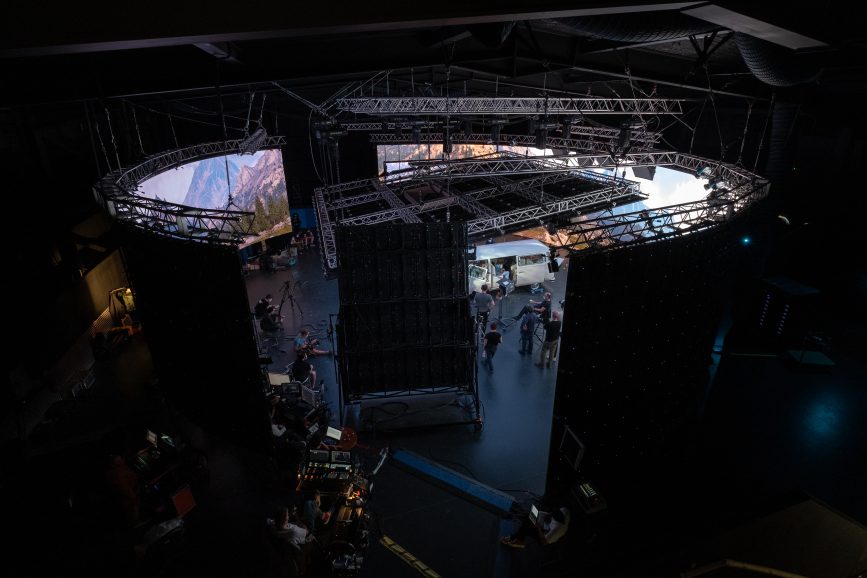
–
This article was paid for by ARRI Stage London.







